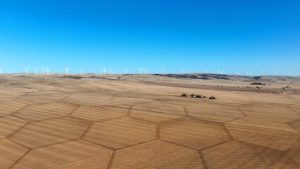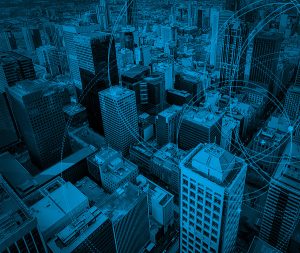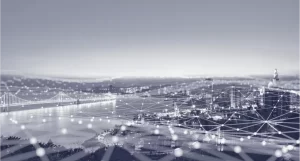Savannah Resources plc (LON:SAV), the AIM quoted resource development company, has today announced a significant increase in the JORC 2012-Compliant Indicated and Inferred Mineral Resource Estimate at the Mina do Barroso Lithium Project in northern Portugal.
Highlights
· Mina do Barroso believed to be Western Europe’s largest spodumene (a lithium bearing mineral) Mineral Resource
· 52% increase in overall Mineral Resource for Mina do Barroso, which now stands at 14Mt at 1.1% Li₂O
· Resource defined from three deposits, and expansion marks an ~87% increase in the total Mineral Resource Estimate at Grandao to 10.3Mt at 1.1% Li₂O containing 111,600t of Li₂O
· ~70% of the Grandao Deposit is now reported at the higher confidence Indicated classification, with an increase in Li₂O grade of ~6% compared to the February 2018 estimate
· Significant upside remains and further Mineral Resource Estimate updates are expected during 2018:
o Drilling is now underway targeting both down dip and strike extensions of the current Mineral Resource Estimate
o Excellent potential for new discoveries of additional lithium bearing pegmatite bodies
· Scoping Study on track for completion in Q2 2018 ahead of making a development decision by early-2019
Savannah Resources plc CEO, David Archer said: “Mina do Barroso is shaping up as a major new European mineral discovery. With the strong growth prospects for lithium ion batteries for Electric Vehicles and for electricity storage from the grid this is a critical time to be bringing a project of Mina do Barroso’s scale, grade and location, on stream. We believe that Mina do Barroso has the potential to be a key piece of Europe’s emerging lithium value chain that could help support the shift by European car manufacturers to the production of Electric Vehicles.”
“This is the second Mineral Resource Estimate upgrade we have made in the last two months, outlining our rapid development approach. We believe we have established the largest spodumene lithium Mineral Resource in Western Europe. It is important to remember that spodumene concentrate is the dominant lithium mineral product that is traded internationally, and with no current European producer we believe that Portugal could be the first European supplier of spodumene thanks to the near-term development potential of Mina do Barroso, which has already been granted a Mining Lease. Our focus now is to establish the Project’s economics, with the results of the Scoping Study due this quarter. Further Mineral Resource upgrades are expected in coming months.”
Mineral Resource Estimate
A Mineral Resource Estimate for the Grandao Lithium Deposit has been completed by Payne Geological Services Pty Ltd, an external and independent mining consultancy – http://www.paynegeo.com.au/paul-payne. The Deposit forms part of Savannah’s Mina do Barroso Lithium Project, located in northern Portugal. The Mineral Resource Estimate has been classified as Indicated and Inferred Mineral Resource Estimate in accordance with the JORC Code, 2012 Edition and is summarised in Table 1, Table 2 and Appendix 1.
Table 1. April 2018 Mineral Resource Summary
|
|
||||||||||
|
Deposit |
Indicated |
Inferred |
Total |
|||||||
|
Tonnes |
Li2O |
Fe2O3 |
Tonnes |
Li2O |
Fe2O3 |
Tonnes |
Li2O |
Fe2O3 |
Li2O |
|
|
Mt |
% |
% |
Mt |
% |
% |
Mt |
% |
% |
Tonnes |
|
|
Grandao |
7.2 |
1.1 |
1.3 |
3.1 |
1.1 |
1.3 |
10.3 |
1.1 |
1.3 |
111,600 |
|
Reservatorio |
|
|
|
3.2 |
1.0 |
1.4 |
3.2 |
1.0 |
1.4 |
32,000 |
|
Noa |
|
|
|
0.5 |
1.2 |
1.3 |
0.5 |
1.2 |
1.3 |
5,600 |
|
Total |
7.2 |
1.1 |
1.3 |
6.7 |
1.1 |
1.4 |
14.0 |
1.1 |
1.3 |
149,300 |
(minor rounding discrepancies may occur)
Table 2. Grandao Deposit April 2018 Mineral Resource Estimate (0.5% Li2O cut-off grade)
|
Resource |
Tonnes |
Li2O |
Ta2O5 |
Fe2O3 |
Li2O |
|
Mt |
% |
ppm |
% |
Tonnes |
|
|
Indicated |
7.2 |
1.1 |
22 |
1.3 |
77,100 |
|
Inferred |
3.1 |
1.1 |
25 |
1.3 |
34,600 |
|
Total |
10.3 |
1.1 |
23 |
1.3 |
111,600 |
(minor rounding discrepancies may occur)
The Grandao Deposit comprises two main pegmatite intrusions. The upper part of the deposit occurs within a broad, shallow dipping pegmatite body with a typical thickness of 20m-40m. The lower portion appears to be a steep dipping dyke, which is 15m-20m in true width. The geometry of the lower zone is not clear due to the current sparse drilling in this portion of the Deposit, where only three holes have intersected the zone. In addition, four minor lenses of pegmatite are also included in the Mineral Resource Estimate. Both main pegmatite zones remain open either along strike or down plunge.
The Grandao Mineral Resource Estimate is based on results from 70 Reverse Circulation (‘RC’) drill holes and two diamond drill holes all completed by Savannah in 2017 and 2018.
Potential Resource Expansion
The Grandao Deposit remains open both along strike in a number of directions as well as down dip. Given the consistency and predictability in which the drilling programme has been able to regularly intersect the main flat lying pegmatite it is reasonable to interpret that further drilling could lead to a further expansion of the Grandao Deposit.
Geology
At Mina do Barroso, lithium mineralisation occurs predominantly in the form of spodumene-bearing pegmatites, which are hosted in metapelitic and mica schists, and occasionally carbonate schists of upper Ordovician to lower Devonian age. The main Grandao pegmatite is a flat-lying, tabular zone defined over an area of 500m north-south and 500m east-west and varies in thickness from 10m-60m. It is very close to surface and is visible in outcrop over a significant area. A lower zone of mineralisation is also present at Grandao, hosted in what is interpreted to be a north-south trending steep-dipping, tabular pegmatite dyke 15m-20m in true width. The geometry of the lower pegmatite is not well defined due to the currently sparse drilling.
At the Project, lithium is present in most pegmatite compositions and laboratory test work confirms that the lithium is almost exclusively within spodumene. Distinct lithium grade zonation occurs within the pegmatites, with weakly mineralised zones often evident at the margins of the dykes. Minor xenoliths and inliers of schist are observed on occasions.
The weathering profile comprises a shallow, surficial zone of weak to moderate oxidation, particularly of the schistose country rock. A zone of deeper weathering exists on the western side of the Grandao Deposit with moderate oxidation to a depth of up to 50m.
Drilling
A total of 70 RC holes and two diamond holes define the Grandao Mineral Resource Estimate. Four of the RC holes and both diamond holes were awaiting assay results however the geological logging from those holes was used to assist in interpretation of the pegmatite. The holes were drilled on an approximate grid spacing of 40m-60m. All holes were drilled by Savannah in 2017 and 2018.
Drill collar locations are recorded in Universal Traverse Mercator (“UTM”) coordinates using differential GPS. All Savannah drilling has been down-hole surveyed using a gyroscopic tool.
Sampling and Sub-Sampling Techniques
For the Savannah RC drilling, a face-sampling hammer was used with samples collected at 1m intervals from pegmatite zones with composite sampling of typically 4m in the surrounding schists in early drilling. In recent drilling the schist 5m either side of the pegmatite was sampled at 1m intervals with the rest of schist remaining unsampled. The 1m samples were collected through a rig-mounted riffle splitter and were 4kg-6kg in weight. The 4m composites were collected by spear sampling of the 1m intervals. Samples were weighed to assess the sample recovery which was determined to be satisfactory.
Core was PQ and HQ in size and sampled to geological boundaries. Half core was collected for metallurgical test work, and quarter core samples were collected for assay. No assay results from the diamond drilling were available for this update.
Sample Analysis Method
For all Savannah drilling, whole samples were crushed then riffle split to produce a 250g split for pulverising and analysis.
The samples were analysed using ALS laboratories ME-MS89L Super Trace method which combines a sodium peroxide fusion with ICP-MS analysis and a multi-element suite was analysed.
QAQC protocols were in place for the drilling programmes and included the used of standards and field duplicates. The data has confirmed the quality of the sampling and assaying for use in Mineral Resource estimation.
Estimation Methodology
For the Grandao Mineral Resource Estimate, a Surpac block model was constructed with block sizes of 20m (EW) by 10m (NS) by 5m (elevation) with sub-celling to 5m by 2.5m by 1.25m. The typical drill hole spacing is 40m-60m.
Interpretation of the pegmatite dykes was completed using detailed geological logging and Fe geochemistry. Wireframes of the pegmatites were prepared and within those the sample data was extracted and analysed. A clear break in the grade distribution occurs at 0.5% Li2O and this grade threshold was used to prepare the internal grade domains for estimation. In addition to the two main pegmatite bodies, several small pegmatites were also interpreted. Zones of unmineralised schist within the pegmatite body were selectively wireframed and excluded from the estimate.
Sample data was composited into 1m intervals then block model grades estimated using ordinary kriging (“OK”) grade interpolation for the two main pegmatites and inverse distance squared (“ID2”) grade interpolation for the four small pegmatite zones. A first pass search range of 60m was used and oriented to match the dip and strike of the mineralisation. A minimum of 10 samples and a maximum of 24 samples were used to estimate each block. The majority of the Mineral Resource Estimate (61%) was completed in the first pass with expanded search radii of 120m and 240m used for the blocks not estimated in the first pass. No high-grade cuts were applied to the estimate.
Iron within the pegmatites is uniformly low, with a mean Fe2O3 grade of 1.3% at Grandao. Other similar deposits have reported that a large proportion of the assayed iron is due to contamination from the abrasion of steel drilling and sample preparation equipment and this will be investigated as part of ongoing studies at the Project.
Bulk density determinations (helium pycnometer) were carried out on 87 sample pulps. Bulk density values applied to the estimates were 2.5t/m3 for oxide lithologies, 2.7t/m3 for unoxidised pegmatite and 2.8t/m3 for unoxidised schist.
Mineral Resource Classification
The Mineral Resource Estimate was classified in accordance with the Australasian Code for the Reporting of Exploration Results, Mineral Resources and Ore Reserves (JORC, 2012).
The main pegmatite dyke at Grandao has generally been drilled at 40m to 60m holes spacings. The majority of holes in the main pegmatite at Grandao have consistently intersected pegmatite, with the majority intersecting resource grade Li2O mineralisation and the continuity of lithium mineralisation is good. The portion of the deposit defined by 40m to 60m spaced drill holes has been classified as an Indicated Mineral Resource Estimate. Where the main pegmatite showed good potential for further extensions, the Indicated Mineral Resource Estimate was extrapolated up to 60m past drill hole intersections and the Inferred Mineral Resource Estimate was extrapolated a further 60m.
All minor pegmatite bodies were classified as an Inferred Mineral Resource Estimate due to the lack of detailed drilling or the uncertainty of geometry of the mineralisation.
The main shallow pegmatite at Grandao lies entirely above 100m vertical depth. The deep pegmatite has been reported to a depth of 160m vertical.
Cut-off Grades
The shallow and flat lying nature of the main Grandao pegmatite suggests good potential for open pit mining if sufficient resources can be delineated to consider a mining operation. The lower pegmatite at Grandao has favourable geometry and thickness for low-cost underground mining as an option in the second step. As such, the Mineral Resource Estimate has been reported at a 0.5% Li2O lower cut-off grade to reflect assumed exploitation by low-cost mining methods.
Metallurgy
Metallurgical test work has been conducted by Savannah on representative mineralisation at Mina do Barroso. The work was completed by Nagrom Metallurgical in Australia and confirmed that high-grade lithium, low-grade iron concentrate can be generated from the mineralisation using conventional processing technology. Microscopy confirmed that the concentrate was almost entirely spodumene. A substantial metallurgical test work programme has recently commenced.
Modifying Factors
No modifying factors were applied to the reported Mineral Resource Estimate. Parameters reflecting mining dilution, ore loss and metallurgical recoveries will be considered during the any future mining evaluation of the Project.










































